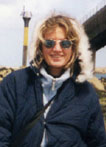|
Comments |
Marine biodiversity: diversity of one of the main groups of organisms characterising the marine environments, hydroids and hydromedusae (Cnidaria, Hydrozoa, Hydroidomedusae).
Taxonomy: compilation of species lists, with researches on morphology, life cycles, physiology, development, behaviour, ecology, biogeography, and evolution of the hydroids and hydromedusae (Cnidaria, Hydrozoa, Hydroidomedusae).
Marine Biology and Oceanography: the complex life cycles of hydroids and hydromedusae, with alternation of benthic (hydroids) and planktonic
(hydromedusae) stages, made detailed life cycle studies necessary for the understanding of the ecological role of the group in the studied habitats,
namely: seagrass meadows, rocky shores, coral reefs, marine caves, coastal open waters. These animals offer a unique opportunity for the understanding of plankton-benthos interactions since they are important and conspicuous components of both domains, where they play a key role as micropredators.
The analysis of the ecological meaning of the different stages of the life cycle of Hydroidomedusae is important to understand the possible causes for apparently abnormal jellyfish blooms.
The above fields of interest constitute a global approach to the study of marine life, having the organism at its centre. My view of science implies, of course, a horizontal approach defining a main field of interest (for me it is Hydrozoan biodiversity), but requires also a vertical approach connecting as many disciplines as possible. This requires strong theoretical efforts towards the ³discovery² of the conceptual continuity that links all types of knowledge. |
